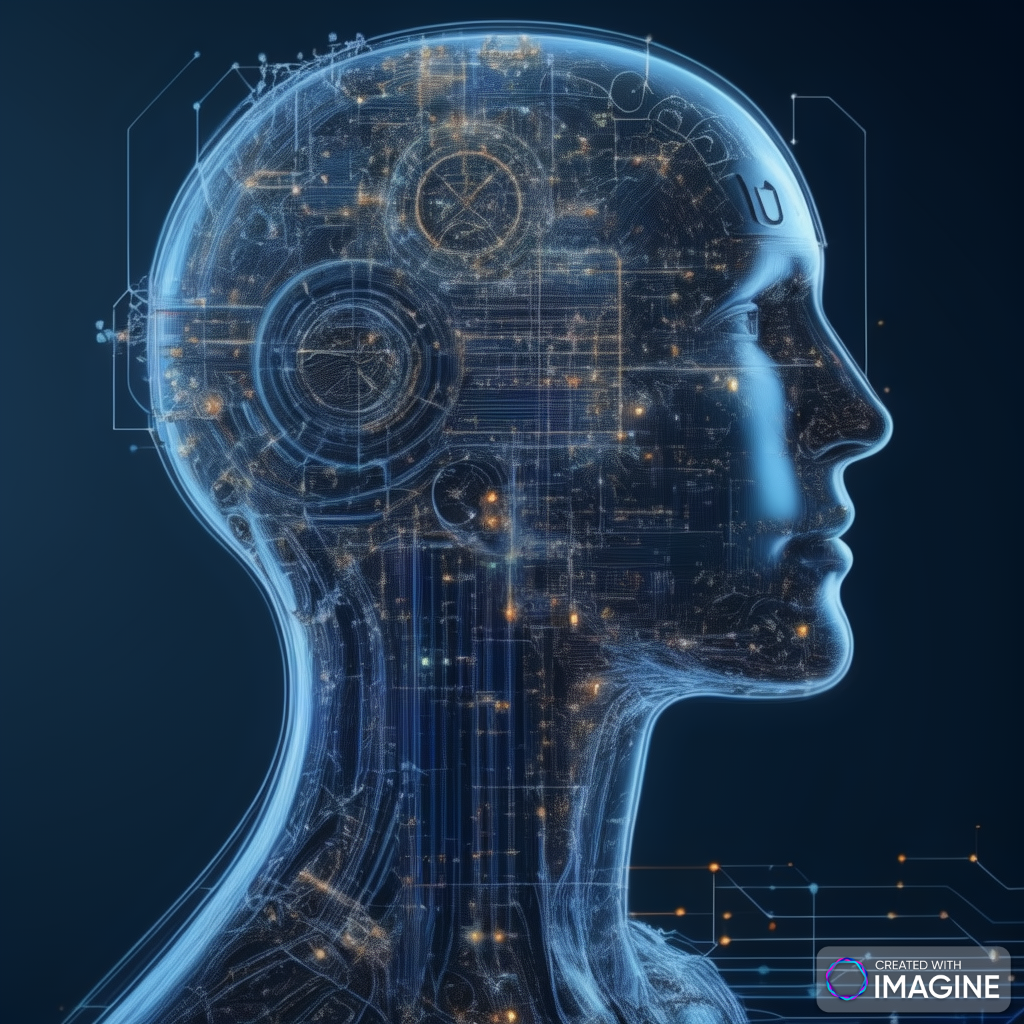Artificial Intelligence and Machine Learning (AI/ML) systems do not have feelings or emotions. Here’s a detailed explanation of why this is the case:
Understanding AI and ML
What AI and ML Are
- Artificial Intelligence (AI): AI refers to the simulation of human intelligence in machines that are programmed to think like humans and mimic their actions. This includes problem-solving, learning, and understanding language.
- Machine Learning (ML): ML is a subset of AI that focuses on the development of algorithms and statistical models that enable computers to improve their performance on tasks through experience (data).
What AI and ML Are Not
- Sentient: AI and ML systems do not possess consciousness, self-awareness, or subjective experiences.
- Emotionally Intelligent: While AI can be programmed to recognize and respond to human emotions (e.g., through sentiment analysis or emotion recognition software), it does not experience emotions itself.
Why AI and ML Lack Emotions
Nature of AI/ML Systems
- Data-Driven: AI/ML systems operate based on data and algorithms. They analyze input data, learn patterns, and make predictions or decisions based on that data. They do not have the biological or neurological structures that are necessary for emotions.
- Predefined Responses: When AI appears to exhibit emotions, it is due to predefined programming and data-driven models designed to mimic human emotional responses. These are simulations without genuine emotional experiences.
Biological Basis of Emotions
- Human Emotions: Emotions in humans arise from complex interactions within the brain, involving neurotransmitters, hormones, and the nervous system. These biological processes are linked to survival, decision-making, and social interactions.
- Absence in AI: AI lacks a brain, nervous system, and the biochemical processes that generate emotions. Therefore, it cannot experience feelings in the way living organisms do.
Simulating Emotions
Emotion Recognition and Response
- Recognition: AI systems can be trained to recognize human emotions through facial expressions, voice tone, and text analysis. For example, sentiment analysis algorithms can determine if a text expresses positive or negative feelings.
- Response: AI can be programmed to respond in ways that seem emotionally appropriate. For instance, a customer service chatbot might offer empathy (“I’m sorry to hear that”) based on the detection of frustration in a user’s message.
Limitations of Simulation
- No Genuine Experience: These responses are based on pattern recognition and pre-programmed rules. The AI does not feel empathy or sorrow; it simply follows its training to produce an output that resembles a human-like response.
- Lack of Depth: The depth and complexity of human emotions, influenced by personal experiences, memories, and context, cannot be genuinely replicated by AI.
Ethical and Philosophical Considerations
Ethical Implications
- User Expectations: There is a risk that users might attribute human-like qualities to AI, leading to misunderstandings about the capabilities and limitations of these systems.
- Transparency: It is important for developers and companies to clearly communicate that AI does not have emotions, to prevent misconceptions and ensure ethical use.
Philosophical Questions
- Future Possibilities: Some philosophers and AI researchers speculate about the potential for future AI to develop forms of artificial consciousness or emotion. However, this remains purely theoretical and speculative at present.
- Nature of Emotion: The discussion also touches on the philosophical nature of emotions and whether they can ever be truly replicated in a non-biological entity.
Enhancing Human Data Handling Capabilities
1. Data Grasping/Collecting:
- Education and Training:
- Formal education in data science, statistics, and related fields.
- Continuous learning through online courses and workshops to stay updated with the latest tools and techniques.
- Tool Utilization:
- Mastery of data collection tools like web scraping software, APIs, and data acquisition platforms.
- Utilization of advanced sensors and IoT devices for real-time data collection.
- Collaboration:
- Networking with other professionals to share data and insights.
- Participation in data-focused communities and forums.
2. Data Processing:
- Analytical Skills:
- Development of strong analytical thinking and problem-solving abilities.
- Proficiency in statistical analysis and machine learning algorithms.
- Software Proficiency:
- Expertise in data processing tools like Python, R, SQL, and data visualization tools like Tableau and Power BI.
- Familiarity with big data platforms like Hadoop and Spark.
- Automation:
- Implementation of automated data processing workflows using scripts and tools.
- Utilization of cloud-based data processing services for scalability and efficiency.
3. Data Application:
- Insight Generation:
- Ability to interpret data and extract meaningful insights.
- Application of data-driven decision-making in personal and professional contexts.
- Communication:
- Proficiency in conveying data insights through reports, presentations, and dashboards.
- Use of storytelling techniques to make data more accessible and compelling.
- Implementation:
- Integration of data insights into business strategies and operational processes.
- Monitoring and evaluating the impact of data-driven decisions.
4. Learning from Feedback:
- Continuous Improvement:
- Regular review of outcomes to assess the accuracy and effectiveness of data applications.
- Adjustment of methods and models based on feedback and new information.
- Adaptive Learning:
- Adoption of adaptive learning systems that refine algorithms based on performance metrics.
- Engagement in a feedback loop to continuously enhance data handling capabilities.
- Resilience:
- Development of resilience to adapt to changing data landscapes and evolving technologies.
- Openness to experimenting with new approaches and learning from failures.
5. Managing More Data Constantly:
- Scalability:
- Implementation of scalable data infrastructure to handle increasing data volumes.
- Utilization of cloud storage solutions for flexible and efficient data management.
- Data Governance:
- Establishment of robust data governance frameworks to ensure data quality and compliance.
- Regular data audits and maintenance to uphold data integrity.
- Ethics and Privacy:
- Adherence to ethical guidelines and data privacy regulations.
- Transparent handling of personal data and informed consent from data subjects.
6. Enhancing Cognitive Abilities:
- Cognitive Training:
- Engagement in cognitive training exercises to improve memory, attention, and processing speed.
- Utilization of brain training apps and games.
- Healthy Lifestyle:
- Maintenance of a healthy lifestyle through proper nutrition, exercise, and sleep.
- Stress management techniques like mindfulness and meditation.
- Technological Augmentation:
- Exploration of emerging technologies like neurofeedback and brain-computer interfaces.
- Use of AI assistants to augment cognitive functions and decision-making.
Enhancing Human Data Handling Capabilities in Greater Depth
1. Data Acquisition Expertise:
- Exploring Emerging Techniques:
- Delve into the use of blockchain for secure and decentralized data collection.
- Leverage edge computing to gather data closer to the source for real-time analysis.
- Custom Solutions:
- Develop bespoke data acquisition systems tailored to specific industry needs.
- Utilize machine learning models to predict and proactively gather relevant data points.
- Ethical Considerations:
- Implement strategies to ensure data is collected ethically, respecting user privacy and consent.
- Stay informed about evolving regulations and standards in data collection to remain compliant.
2. Advanced Data Processing:
- Deep Learning and AI:
- Apply deep learning techniques to process complex and unstructured data.
- Utilize artificial intelligence to automate the data cleaning and preprocessing stages.
- Real-Time Processing:
- Employ stream processing frameworks to handle data as it arrives, enabling immediate analysis and action.
- Integrate real-time data analytics into business operations for instant decision-making.
- Quality Assurance:
- Develop rigorous data validation protocols to ensure the accuracy and reliability of processed data.
- Use anomaly detection algorithms to identify and correct errors in data processing pipelines.
3. Practical Application of Insights:
- Predictive Analytics:
- Implement predictive models to forecast trends and outcomes based on historical data.
- Use scenario analysis to explore different future possibilities and their implications.
- Personalization:
- Tailor products and services to individual customer preferences using data-driven insights.
- Enhance user experiences by leveraging data to provide personalized recommendations and content.
- Operational Efficiency:
- Streamline business processes through data-driven optimization and automation.
- Monitor key performance indicators in real-time to make dynamic adjustments to strategies.
4. Feedback and Iterative Learning:
- Data-Driven Feedback Loops:
- Establish continuous feedback mechanisms to refine models and strategies based on performance.
- Use A/B testing to compare different approaches and select the most effective one.
- Adaptive Systems:
- Create self-learning systems that evolve and improve autonomously from new data.
- Integrate reinforcement learning to enhance decision-making processes.
- Knowledge Sharing:
- Foster a culture of knowledge sharing within organizations to learn from collective experiences.
- Participate in industry conferences and seminars to stay abreast of best practices and innovations.
5. Handling Increasing Data Volumes:
- Scalable Architectures:
- Design data architectures that can grow with increasing data demands, such as microservices and serverless computing.
- Utilize distributed databases to manage large-scale data efficiently.
- Data Compression and Storage Optimization:
- Implement advanced data compression techniques to reduce storage requirements.
- Optimize data storage solutions to balance cost, performance, and accessibility.
- Efficient Retrieval:
- Develop indexing and retrieval systems to quickly access relevant data from massive datasets.
- Use in-memory databases for rapid data access and processing.
6. Cognitive Enhancement and Augmentation:
- Neurological Studies:
- Engage in research on brain plasticity and cognitive function to develop methods for enhancing mental acuity.
- Explore cognitive enhancement through nootropics and other supplements.
- Augmented Reality (AR) and Virtual Reality (VR):
- Use AR and VR technologies to visualize complex data in immersive environments, enhancing comprehension.
- Implement AR and VR for training simulations to improve data interpretation skills.
- Collaborative Intelligence:
- Develop symbiotic systems where humans and AI work together, combining human intuition with machine precision.
- Use collaborative platforms to harness collective intelligence from diverse teams.
While achieving exceptional data handling capabilities is challenging, ongoing advancements in education, technology, and cognitive science provide avenues for significant improvement. By embracing innovative techniques, fostering interdisciplinary collaboration, and leveraging ethical frameworks, individuals and organizations can enhance their ability to acquire, process, and utilize data effectively. Continuous feedback, adaptive learning, and scalable systems will further support the ability to manage and learn from an ever-growing influx of data, driving more informed and impactful decisions.
While achieving near-perfect data handling capabilities may be challenging, significant improvements can be made through education, tool mastery, collaboration, and continuous learning. By leveraging technology, fostering analytical skills, and adhering to ethical standards, humans can enhance their ability to collect, process, apply, and learn from data, thereby making more informed and impactful decisions.
Conclusion
AI and ML systems do not have feelings or emotions. They are sophisticated tools designed to process data, recognize patterns, and simulate human-like responses. Any appearance of emotional intelligence in AI is a result of programming and data, not genuine emotional experiences. Understanding this distinction is crucial for the responsible and ethical development and use of AI technologies.







